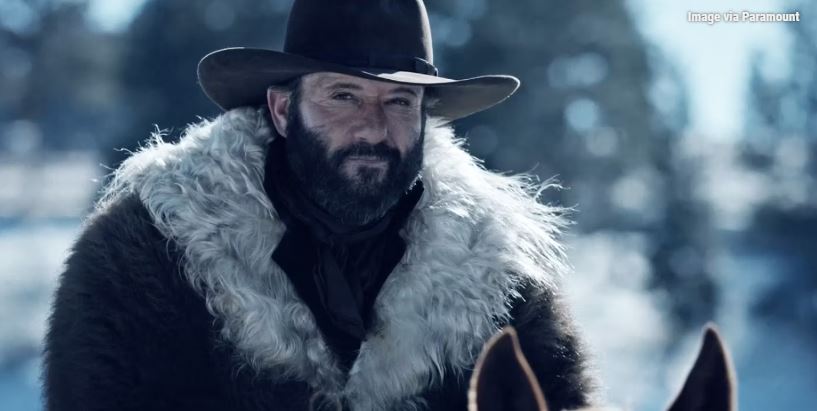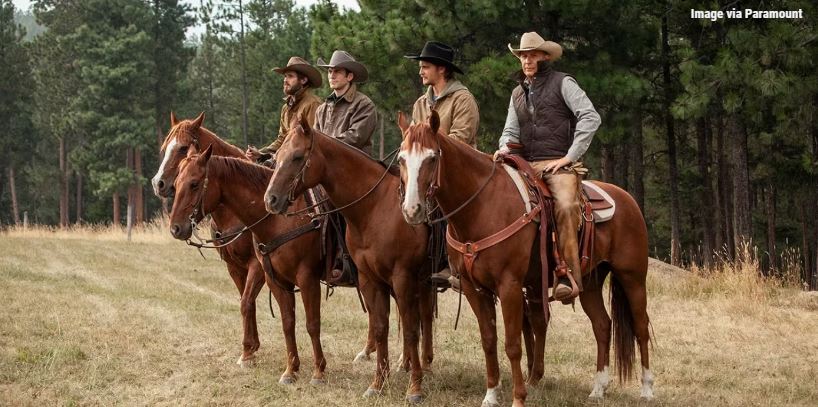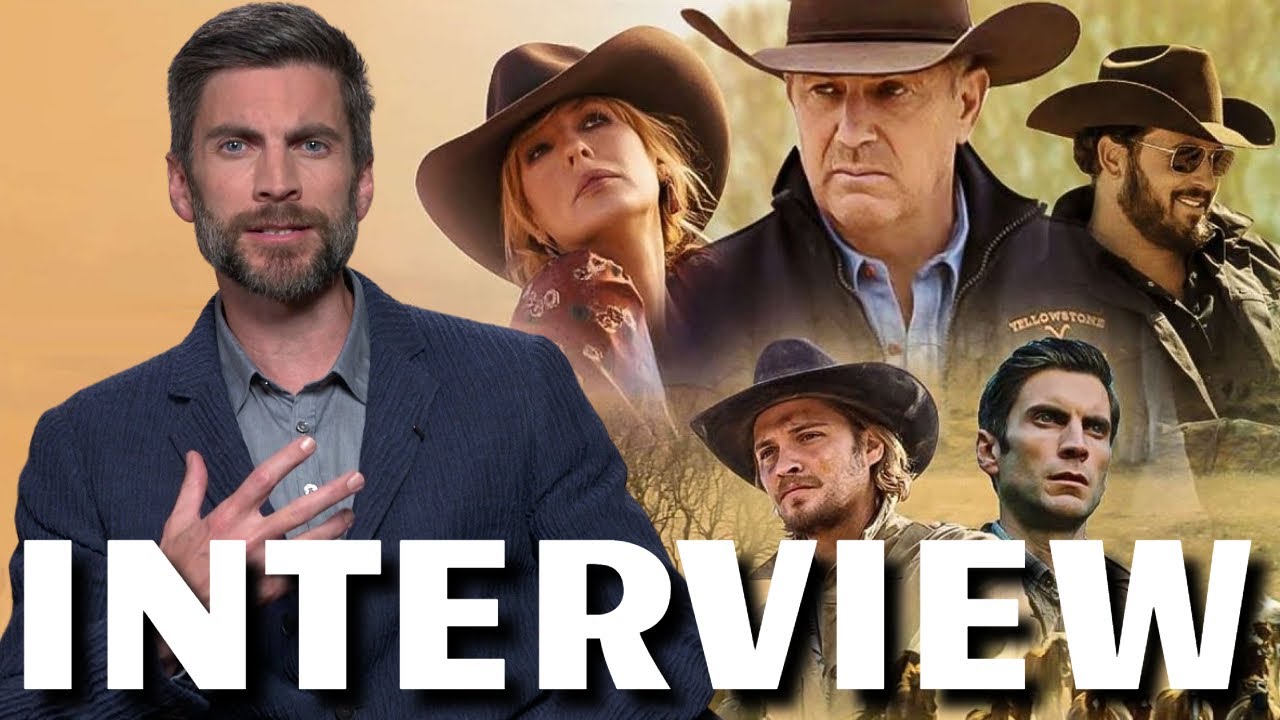With how big Taylor Sheridan and Kevin Costner have built up the Yellowstone franchise, there’s no doubt that, even in the absence of the series’ lead star, it will continue on for a number of years. The various prequels, and spinoffs, including 1883, 1923 with Helen Mirren and Harrison Ford, and the upcoming sequel series led by Matthew McConaughey, will see to it that Yellowstone far outlives Costner’s John Dutton, even if he’s the reason many of us started watching in the first place. But no matter how much one loves Sheridan’s carefully crafted world, there’s no doubt that Yellowstone isn’t always the most accurate representation of Montana’s Paradise Valley. Actually, there’s quite a bit of embellishment that goes on in Yellowstone.
A show that Costner once described as “a postcard for Montana,” Yellowstone has no doubt affected the population of “The Last Best Place.” Earlier this year, NBC Montana reported that the series has brought over $700 million to the Montana economy. Yet, despite the monetary influx, many longtime residents feel as if the series is responsible for the recent population changes and the drastic increases in costs of living. Whether that’s true or not, the fact remains that Yellowstone is not always the most accurate representation of Montana, and there’s one thing about the Treasure State that the Paramount series gets wrong in particular.
‘Yellowstone’ Doesn’t Depict Montana’s Harsh Winters

Although Montana is warm and beautiful in the summer, the winter can sometimes be a different story. Though the landscape is still as picturesque as ever, Park County (named for its proximity to Yellowstone National Park) gets an average of 96 inches of snow per year, a far cry from the largely snow-less days seen in Yellowstone. For reference, the yearly snowfall average across the entire United States is generally less than 30 inches. In layman’s terms, Montana gets a lot of snow, a lot more than the Paramount series leads you to believe. Additionally, the state keeps snow on the ground for most months of the year, with July and August being the least likely to catch any (though it’s certainly not impossible).
There’s a reason many visit the state for its skiing, and why college students continue to flock there despite the often frigid winters. Speaking from personal experience (Bozeman’s Montana State University is this author’s alma mater), winters in Montana are generally the longest part of the year and can often last up to eight months, give or take. Though you’ll occasionally see some melted snow in the background on Yellowstone (especially since they moved production from Utah to Montana), the series primarily shoots during the summers. Of course, the show is actually filmed in the Missoula area rather than Bozeman, but that side of the state still gets its fair share of snowfall.
Admittedly, as the series progresses, the Yellowstone Universe has made a more honest effort to show the wintery landscape over time. Fans will notice that the flagship show’s flashbacks to 1893, as well as episodes of the prequel series 1923, better highlight the Montana winter, though even then the snow isn’t terribly deep. No doubt, it’s much harder to film a television series in the winter than in the summer, but it’d also make the series considerably more authentic to the Montana way of life.
‘1883’ Is More Accurate With Weather Conditions Than ‘Yellowstone’

According to the University of Montana (boo), the state holds “the national record for cold with a 70-degrees-below-zero reading.” Additionally, 20 degrees below zero isn’t uncommon during the winter months, and it can be easy for pipes to freeze, car batteries to die, and the power to go out. Yes, that very thing has happened to this author. “Travel could be very difficult to impossible and tire chains may be required for some vehicles,” the National Weather Service in central Montana’s Great Falls reported this past March. “Those in the backcountry should ensure they have appropriate knowledge and gear and may want to consider alternate plans.”
There might be occasional references to wintertime on Yellowstone, but nothing the series ever takes the time to really explore, which is actually kind of tragic. Even 1883 took the time to address the elements as travelers on the Oregon Trail crossed treacherous rivers, braved fierce tornadoes, and tackled horrid storms. Yes, much of that took place in Texas or on the journey northwestward, but if Sheridan can cover those harsh climates, why not do the same for Montana?
With wind chills that can get down to -50 degrees and ice that can make mountain passes incredibly dangerous, the Montana winter isn’t something to take lightly. For the inexperienced in driving on ice or snow, it can be best to take it slow or avoid traveling through the state altogether. Of course, it’s not always that way. There’s plenty to do in a place like Bozeman during the winter, especially if you’re a fan of the outdoors, and even in the frigid cold, it’s one of the most beautiful places in the country. Now, if only Yellowstone could highlight some of that winter scenery and address the occasional harshness of it, maybe then local Montanans would be a bit more accepting of Sheridan’s portrayal.
‘Yellowstone’ Actually Gets a Few Things Wrong About Montana

Beyond the climate itself, there are a few other non-truths about Montana that Yellowstone puts forward. Besides the fact that Bozeman and Paradise Valley aren’t even in the same county (though they’re certainly close enough), there is no Broken Rock Indian Reservation anywhere near those areas. In fact, the closest Native American reservation to the Duttons’ supposed homeland is the Crow Indian Reservation, which is located in the southeastern part of the state, much closer to Billings than to Bozeman.
While a fictionalized reservation isn’t the worst thing Yellowstone could add (it certainly offers a needed perspective that’s accurate to greater Montana, which houses eight tribes and seven reservations), the series highlights a land dispute that doesn’t actually exist. Though folks may own land bordering Yellowstone Park, and likely deal with greedy land developers hoping to build million-plus dollar ranch homes on top of it, the additional Native conflict isn’t a part of everyday living in Paradise Valley.
Beyond that, viewers have rightfully pointed out that, to work a ranch the size of Rhode Island, you’d need more than half a dozen ranch hands to cover all that ground and herd that many heads of cattle. By comparison, King Ranch in South Texas, the inspiration for the Dutton homestead, employs over 700. As a ranching man himself, one would think that filmmaker Taylor Sheridan might note the fantastical nature of John Dutton only employing a handful of workers to run his empire. Since 2021, Sheridan has owned the historic 6666 Ranch located in Guthrie, Texas, a place Yellowstone fans may remember from Season 4 when Yellowstone’s best character Jimmy Hurdstrom (Jefferson White) visited and later moved to the ranch permanently. Of course, not even a big show like Yellowstone could support a cast that size.
‘Mayor of Kingstown’ and ‘Tulsa King’ Are Taylor Sheridan’s Other TV Hits

Despite the differences between the neo-Western fantasy and reality, Taylor Sheridan’s Yellowstone universe is only picking up more steam. After the successes of prequel spin-offs like 1883 and 1923, and more coming down the pipeline, it’s unlikely that the craze will end any time soon. This rings especially true now that Matthew McConaughey has signed on for a spinoff, taking over lead star duties from Kevin Costner. While he may not compare to John Dutton, he’ll surely bring the added star power that the Yellowstone continuation needs to thrive beyond another year. (Who knows, maybe the sequel show will take place during wintertime…) But the Yellowstone universe isn’t the only Taylor Sheridan-led property going strong. Alongside his Western franchise, the filmmaker is also the man behind Mayor of Kingstown starring Jeremy Renner, Tulsa King starring Sylvester Stallone, and Special Ops: Lioness starring Zoë Saldaña, Nicole Kidman, and Morgan Freeman. All in all, things are looking up for Sheridan, Paramount, and the Yellowstone brand despite the lack of snow.
